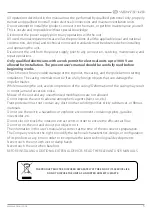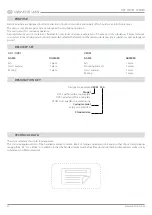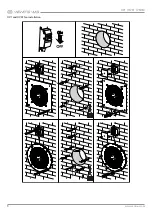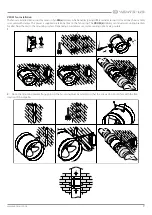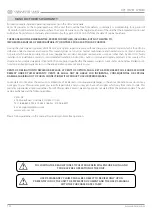
7
www.vents-us.com
MOUNTING AND SET-UP
• Unpack the fan and check for any cuts in the electric wires and cracks in the insulation. Inspect the fan casing to make sure it is free
from any cracks and deformations. Set the impeller in motion and check that it rotates freely without catching against the inlet flange
and the casing.
• Prior to powering up the fan make sure that the mains parameters comply with the technical specifications on the fan label attached
to the protective casing.
• The fan mounting locations must enable adequate access for maintenance, technical service and replacement operations.
• When the service conditions may lead to water ingress, the fans must be equipped with adequate protection. For example, the fans
may be installed under a canopy or a roof.
• Since the fan belongs to Class 1 in terms of electrical hazard protection proper grounding is a must: to ground the equipment,
connect the
terminal to the protective ground circuit.
The fans are installed on wall surfaces by means of a mounting casing with attachment holes:
•
OV1
,
series with a square casing — 4 holes.
•
OVK1
series with a round casing — 6 holes.
WHILE INSTALLING THE UNIT ENSURE CONVENIENT ACCESS FOR SUBSEQUENT
MAINTENANCE AND REPAIR.
BEFORE MOUNTING MAKE SURE THE CASING DOES NOT CONTAIN ANY FOREIGN
OBJECTS (E.G. FOIL, PAPER).



